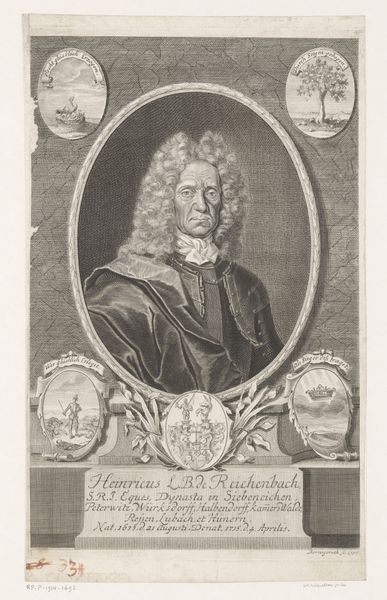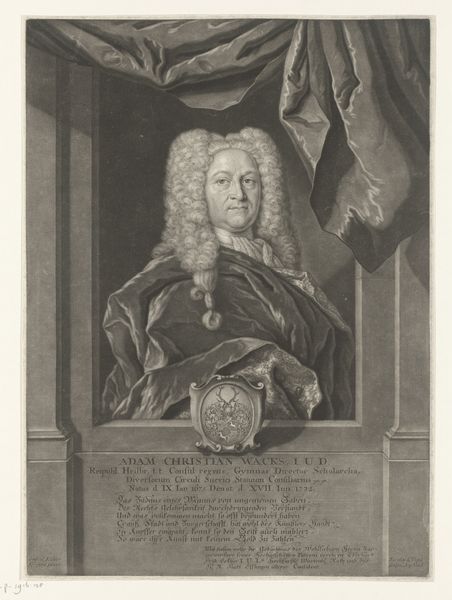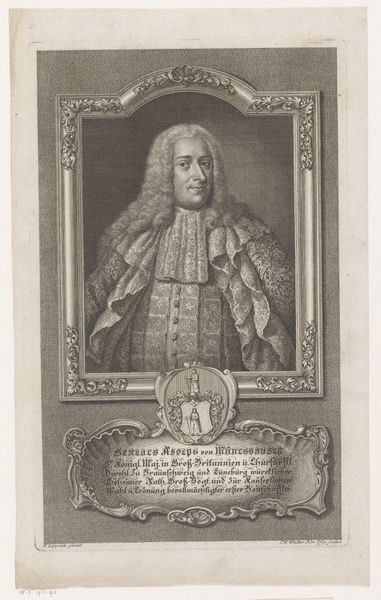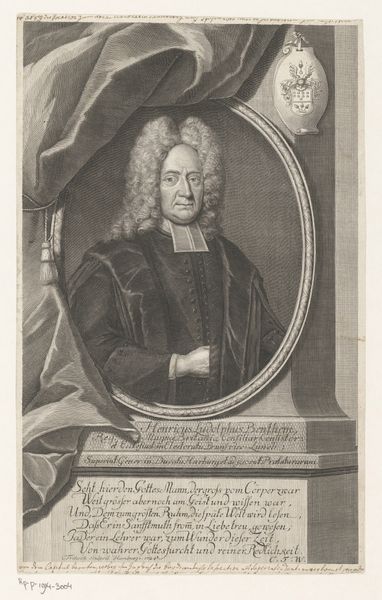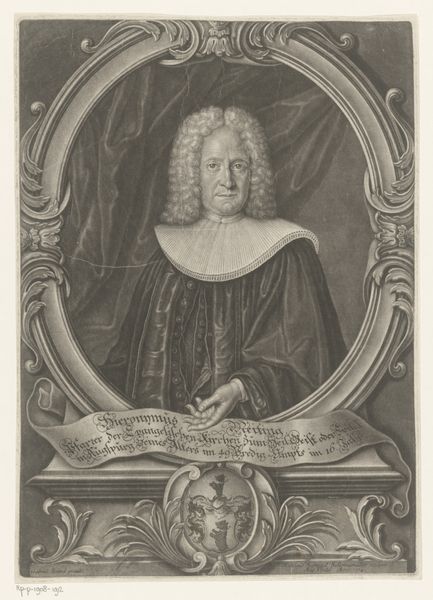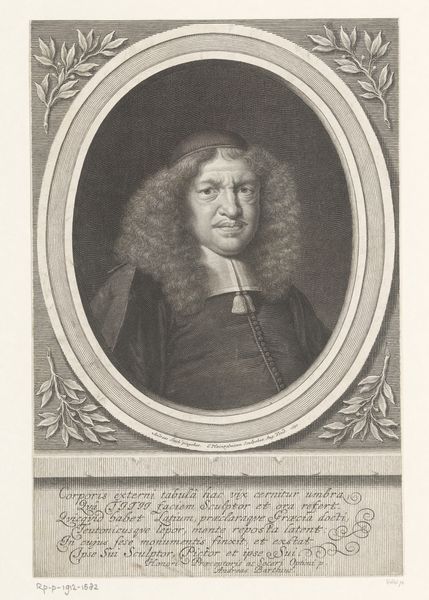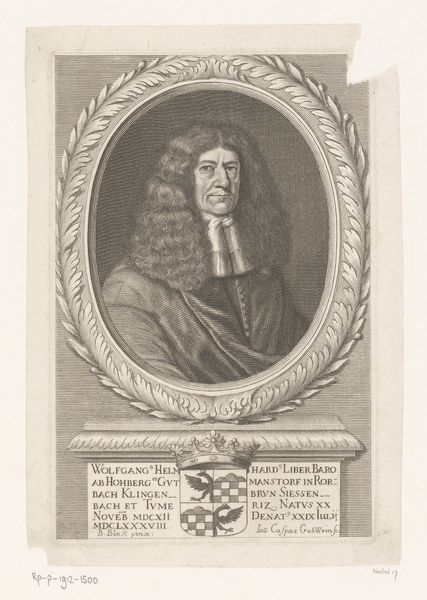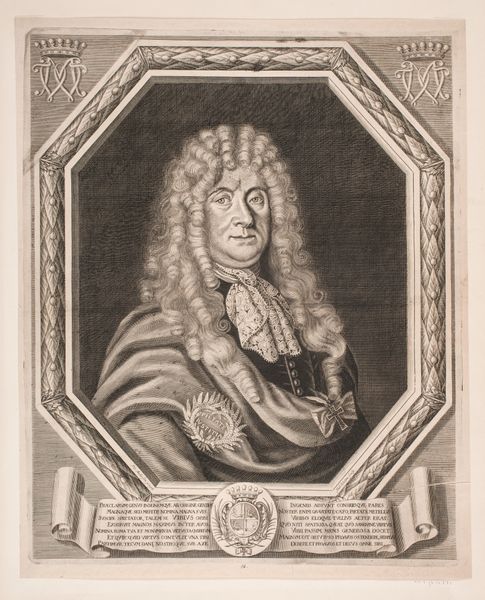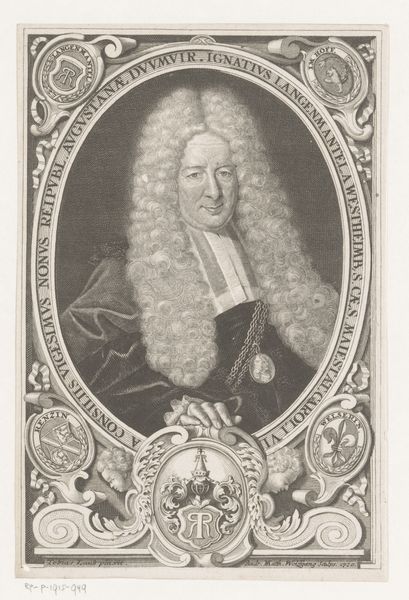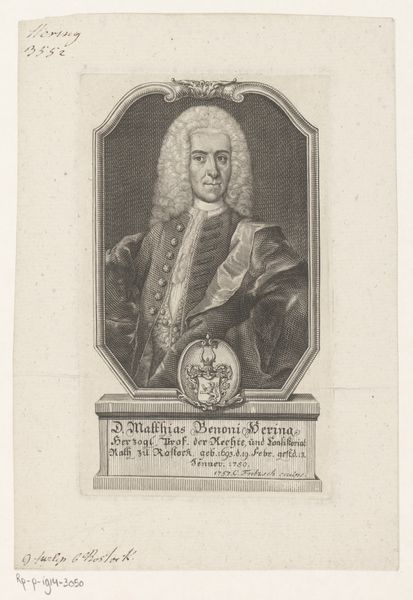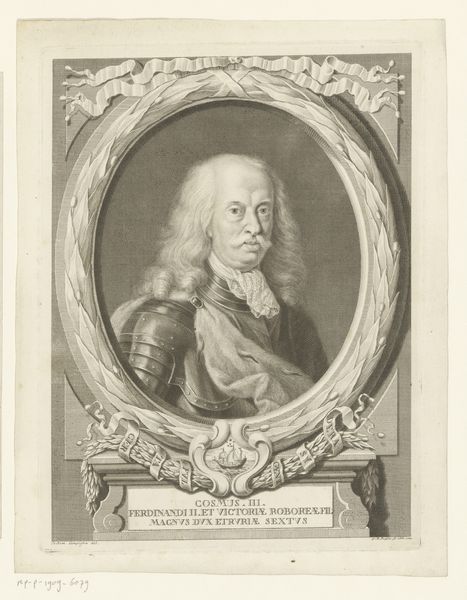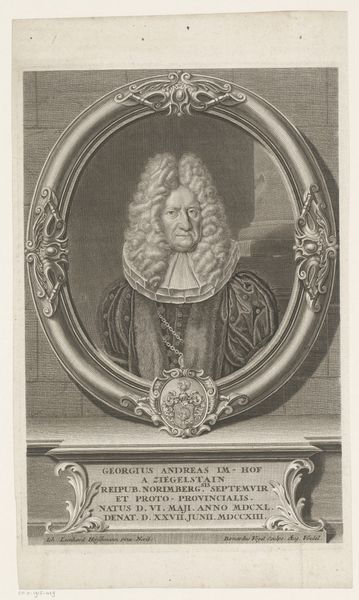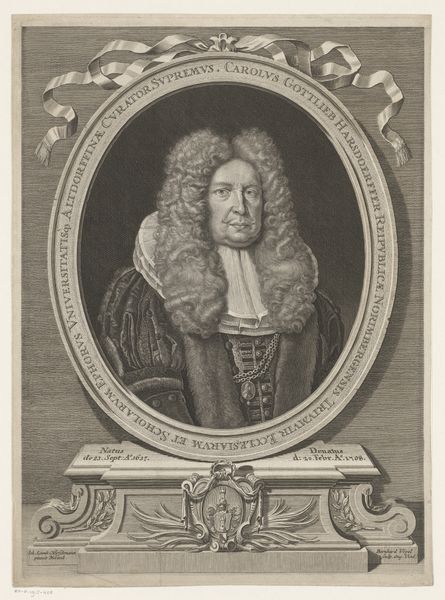
engraving
#
portrait
#
baroque
#
old engraving style
#
portrait reference
#
academic-art
#
engraving
Dimensions: height 197 mm, width 153 mm
Copyright: Rijks Museum: Open Domain
Curator: This engraving by Georg Kilian, dated 1713, presents a "Portret van Gabriel Schweder," now held at the Rijksmuseum. It certainly gives us a striking first impression of the sitter. Editor: It does. The intricate details achieved with engraving are remarkable, but my initial impression is dominated by the weight of it all. The elaborate wig, the heavy drapery—there's a sense of imposing formality, almost oppressiveness, rendered in a stark monochrome palette. Curator: Absolutely. Let's delve into the making of the print, the social context in which such portraiture thrived. Engravings like these weren't just aesthetic objects. They were key to disseminating images, solidifying power, and reinforcing social hierarchies. This print would have been produced through meticulous labor to circulate representations of important officials. Editor: Precisely. The choice of engraving as a medium isn’t accidental. The very act of incising lines onto a copper plate, the precise control needed to render gradations of light and shadow, all speak to a deliberate construction of image, emphasizing certain qualities to communicate status and decorum. Look at the almost mathematical precision in rendering the folds of the fabric. Curator: Consider the labour involved: creating this elaborate design. This shows the power held by Schweder. Editor: The formal composition, with the sitter framed within an oval cartouche and surrounded by symbolic drapery, emphasizes not just his physical appearance but also the construction of identity through artistry. The coat of arms also offers further context about the subject and the values important in society at the time. Curator: Agreed. Beyond merely replicating an individual's likeness, artworks such as these broadcast ideals regarding the labor involved in the subject’s profession, and the hierarchies they belonged to. We shouldn't lose sight of the role played by workshops in facilitating Kilian's output; or the purpose in displaying such artworks and circulating copies amongst a discerning, moneyed elite. Editor: Looking at the composition as a whole reveals more about power in the 18th century than Schweder's face alone. Thanks for highlighting some of that labor that has occurred. Curator: And your description revealed so much of the visual language! It certainly is worth taking our time to analyse.
Comments
No comments
Be the first to comment and join the conversation on the ultimate creative platform.
